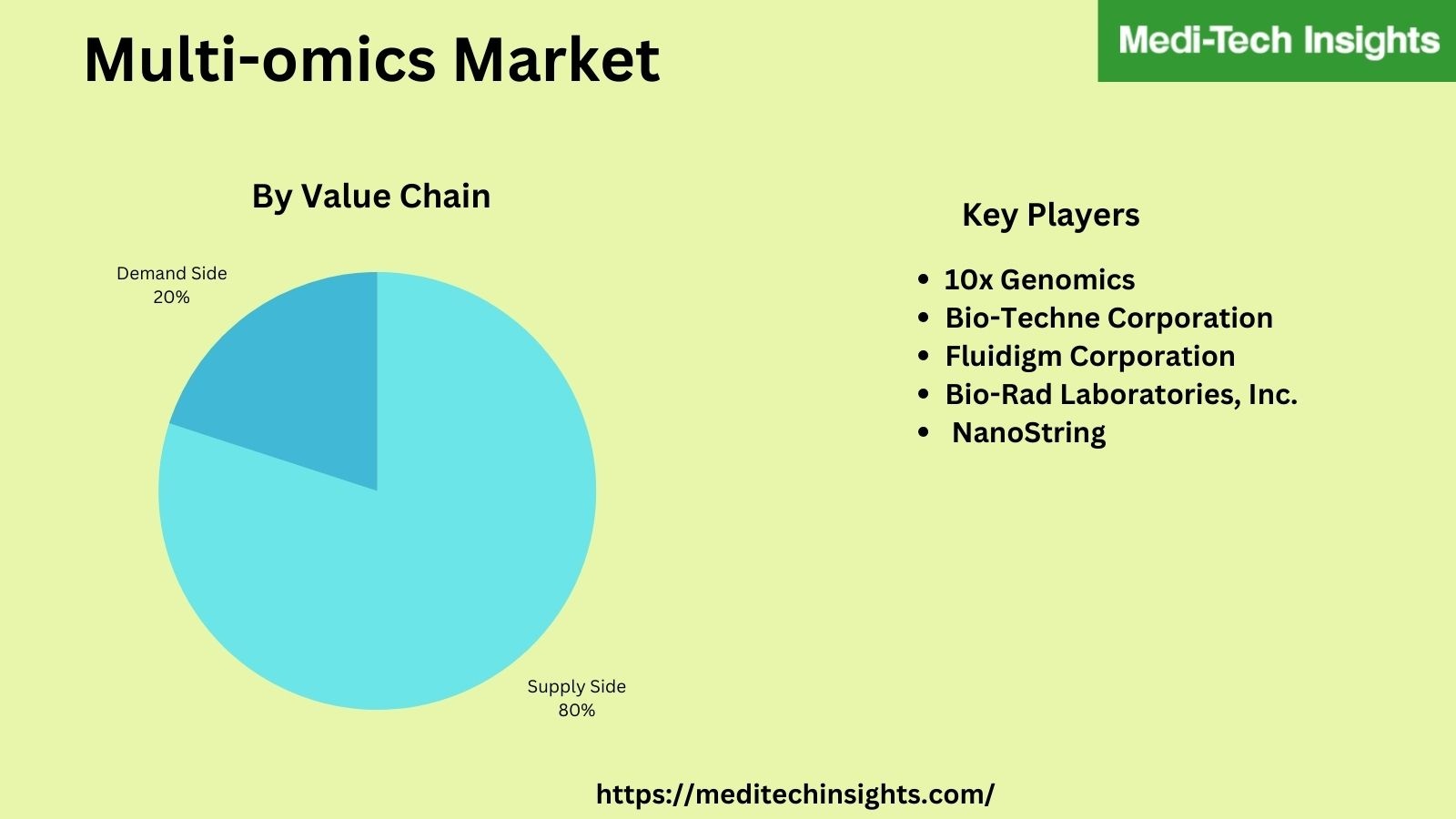The next phase of expansion is expected to be driven by expanding demand for customized treatment, technological improvements, a favorable financing environment, an increasing number of cancer and genetic illnesses, and an increase in R&D expenditure. To learn more about the research report, download a sample report.
Omics has emerged as a new paradigm in molecular research. The suffix -omics refers to a branch of research in biological sciences. Many areas of research can be classed as omics, including genomes, transcriptomics, proteomics, and metabolomics.
- Genomics studies genes and their function. Genomics finds application in drug discovery and development, diagnostics & therapeutic decision-making, agriculture, animal research and other applications
- Transcriptomics studies mRNAs. It is widely used for clinical diagnostics, drug discovery, toxicogenomic and other applications
- Proteomics studies proteins. It is used for clinical diagnosis of cancer, infectious diseases, cardiovascular diseases, immune diseases, neurological disorders, diabetes, etc. and drug discovery.
- Metabonomics studies small molecules involved in cellular metabolism. It is a powerful research tool that is currently being applied to various aspects of drug and biomarker discovery, toxicology research, nutrigenomics and other applications
A thorough knowledge of human health and illness necessitates interpretation of molecular complexity and variability at various levels, including the genome, transcriptome, proteome, and metabolome. With the development of sequencing technology, biology has grown more reliant on data collected at these levels, known together as “multi-omics” data. The availability of multi-omics data has changed the landscape of medicine and biology. Data integration across many platforms (genomics, transcriptomics, proteomics, and metabolomics) aids in identifying causal linkages at numerous levels of biological structure. It provides unmatched chances for studying the underlying biology of complicated disorders like cancer.
“The advent of Multi-omics is turning scientists into molecular detectives and helping them to delve into the depths of disease. It allows researchers and scientists to probe the more complex and transient molecular changes that underpin the course of disease and responses to treatment, helping them better select the right drug target.”
– Senior Director, Data Sciences & Quantitative Biology, Tier I Pharmaceutical & Biotechnology Company
Single-cell Analysis Joins the Multi-Omics Era
The interaction of a cell’s DNA, epigenome, transcriptome, and proteome determines its state. Based on the advancement of these omics technologies, multi-omics technologies for single cells have evolved, capable of capturing many omic layers from the same cell. Profiling numerous omic layers allows for a more full collection of information about each cell than is achievable with a single omic layer alone. Single-cell multi-omics are thought to be more powerful than stand-alone omics because they better reflect the intricate network of connections that underpin cellular activity. Single-cell multi-omics technologies are poised to take center stage in biomedical research because they characterize cells and tissues with unprecedented molecular and architectural detail. For instance,
- In June 2024, Bio-Rad Laboratories, Inc. announced the launch of the ddSEQ™ Single-Cell 3′ RNA-Seq Kit and the complementary Omnition v1.1 analysis software for single-cell transcriptome and gene expression research
- In November 2023, OWKIN and 10x Genomics, Inc. announced an agreement to incorporate 10x Genomics’ spatial omics and single-cell technologies into the MOSAIC project, which is renowned for its innovative tumour analysis for therapeutic discovery
Key Restraints in Multi-Omics Market
The multi-omics market faces significant hurdles, including complex workflows and a lack of standardization, which hinder data integration and reproducibility. Additionally, high costs, lack of skilled labour, and ethical and regulatory concerns regarding data privacy and informed consent further constrain market growth.
Grographical Growth Dynamics in the Multi-omics Market: North America’s Lead and Asia-Pacific’s Rapid Expansion
The multi-omics market exhibits varied growth patterns across different regions. North America is expected to maintain the largest market share due to the strong presence of leading companies and substantial investments in multi-omics research and technology. Europe also represents a significant portion of the market, driven by advancements in genomics and other omics technologies, along with substantial research funding and government support. Countries like Germany, France, and the UK are at the forefront of this growth.
The Asia-Pacific region is anticipated to experience the fastest growth. Factors such as the increasing prevalence of chronic diseases, rising investments in research and development, and technological advancements are driving this expansion. Countries like China, Japan, and India are leading this growth, leveraging multi-omics for precision medicine and personalized healthcare solutions.
Growth Insights for the Multi-omics Market: Products and Services Segment
In the multi-omics market, the product segment dominates revenue due to the continuous advancements in instruments, consumables, and software that are crucial for detailed multi-omics research. These products enable comprehensive analyses across genomics, transcriptomics, proteomics, and metabolomics. The service segment is also growing fast, driven by the rising demand for specialized support in managing complex multi-omics workflows and ensuring precise, reproducible results. Together, innovative products and essential services are driving significant advancements and broader applications in the multi-omics field.
Understanding the Dynamics of Multi-Omics Market: Bulk and Single-Cell Analysis
The multi-omics market by type is divided into two primary segments: bulk and single-cell multi-omics, each playing pivotal roles in advancing biological understanding and therapeutic development. Bulk analysis involves extracting and analyzing genetic material from a population of cells, offering insights into average gene expression levels and genetic variations across a sample. This method dominates the current multi-omics landscape due to its established protocols and broader applicability in studying complex diseases and biological processes. However, single-cell analysis has gained significant traction for its ability to dissect cellular heterogeneity by profiling individual cells, providing precise insights into cell-to-cell variability and rare cell populations. Single-cell technologies are rapidly expanding, driven by advancements in sequencing and bioinformatics, catering to the growing demand for personalized medicine and detailed biological understanding.
Competitive Landscape Analysis
Some of the key players operating in the market are 10x Genomics, Bio-Techne Corporation, Fluidigm Corporation (Standard Bio Tools), Bio-Rad Laboratories, Inc., NanoString, Mission Bio, BD Biosciences, Thermo Fisher Scientific Inc., among others.
Emerging Players Developing Multi-omics Solutions
- AgenT S.A.S.
- OmniTier Inc.
- Mitra Bio
- Proteona (Acquired by Singleron)
- BioTuring
- Govita Tech Limited
- Scipio Bioscience, among others
The Global Multi-omics Market is expected to gain further momentum in the upcoming years due to the growing demand for personalised medicine and precision healthcare, the rising number of investments in multi-omics research, technological advancements, stringent regulatory policies and aggressive organic and inorganic growth strategies followed by the key market players.


